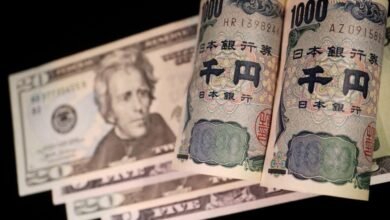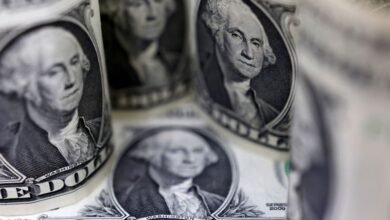In Asia, US dollar’s growing strength gives rise to stability concerns, suspected rate intervention

The US dollar index has risen by more than 4 per cent since the start of the year, triggering alarm bells among central banks in Asia that are running significant trade deficits with the US.
China was predicted to join ranks of high-income nations by 2022. What happened?
China was predicted to join ranks of high-income nations by 2022. What happened?
In mid-April, finance officials from the US, Japan and South Korea agreed to “consult closely” on foreign exchange markets, acknowledging concerns from Tokyo and Seoul over their currencies’ recent sharp declines.
Japan’s finance minister, Shunichi Suzuki, said last month that Tokyo would not rule out measures to deal with excessive volatility in the foreign exchange market, adding that it was important for currencies to move stably, reflecting fundamentals.
Analysts suspect Japanese authorities have stepped into the foreign exchange market twice this week to prevent sharp and economically debilitating declines in the yen, but there has been no official confirmation of this taking place.
In contrast, over the past few months, the People’s Bank of China has kept the onshore daily fixings of the yuan strong relative to survey expectations, maintained benchmark lending rates, and also managed offshore yuan liquidity – all of which pointed to its “defensive” stance in yuan exchange rates, the Bank of America said last week.
Exchange-rate stability … is part of the mandate of the PBOC
“China has always been less ideologically committed to having a free-floating exchange rate than Japan and Korea,” Julian Evans-Pritchard, head of China economics at Capital Economics, said on Friday. “It’s much more willing to step in to target a specific exchange rate.
“Exchange-rate stability is something they value for their own sake, and it is part of the mandate of the PBOC.”
Larry Hu, head of China economics at Macquarie Group, said the message from the Politburo suggested that a policy rate cut was not imminent, as the PBOC is making currency stability its top priority.
China’s central bank stretches for stable yuan, stimulus as Fed delays rate cuts
China’s central bank stretches for stable yuan, stimulus as Fed delays rate cuts
China has kept a tight grip on cross-border fund flows and is wary of large interest-rate differentials with the US that could motivate outflows and more hedging against the further depreciation of the yuan.
However, such a defensive strategy in maintaining the stability of the yuan exchange rates would also keep inflation at low levels, putting pressure on prices and exacerbating China’s overcapacity problems, Bank of America said.
“Ultimately, we believe that a weaker yuan is needed to accommodate US dollar strength and potentially offset possible deflationary pressures,” the bank added.
Evans-Pritchard said it was unlikely the PBOC would engineer a sudden devaluation of the yuan but may allow the currency to weaken gradually over the coming years to help industries deal with oversupply issues or to offset the impact of new trade-protection measures abroad.
“We have already seen substantial concerns among foreign governments about the influx of cheap Chinese goods, and a sharp depreciation at this stage would add to those concerns, [and] perhaps trigger protectionist measures such as tariffs,” he said.
“It could backfire to some degree. Any benefits from weaker exchange rates, in terms of boosting exports, could be offset by greater protectionist measures overseas.”
Source link





